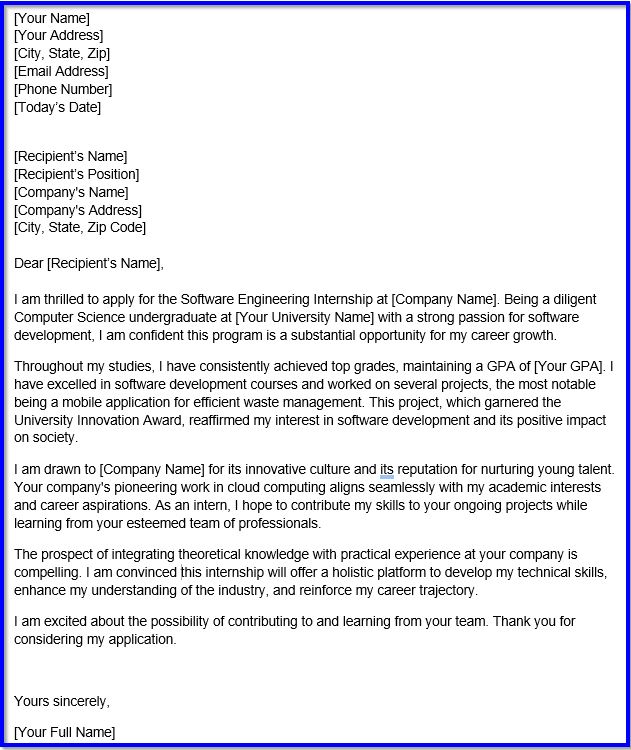A motivation letter, also known as a letter of intent or personal statement, is a critical document in your academic or career pursuit. It’s your chance to stand out from the crowd, communicate your aspirations, and express why you are the right fit for a program or job opportunity. If you’re a student looking to apply for a course, internship, job, or scholarship, it’s vital to understand how to write a persuasive and compelling motivation letter for students. Here’s a comprehensive guide to help you create an impactful document that resonates with your reader.
Some of the links in this post are affiliate links. This means if you click on the link and purchase the item, I will receive an affiliate commission at no extra cost to you. All opinions remain my own.
Contents
Understand the Purpose
Before you start writing, take time to understand the purpose of the motivation letter. It’s not just a document to express your interest but an opportunity to showcase your skills, experiences, and ambitions that align with what you are applying for. It is your platform to illustrate your personal story, highlighting why you are uniquely suited for the opportunity.
The goal of your motivation letter is to stand out from the other candidates. You want to show your passion and, well, motivation for the position that you’re seeking. You want the reader to see what a great candidate you are and how much you care.
Research Thoroughly
Comprehensive research about the institution, position, or organization you’re applying to is critical when writing a motivation letter. Learn about their values, objectives, and the specifics of the program or position. In other words, know what they’re looking for and why.
This knowledge helps you tailor your letter effectively, showing that you’re interested and have taken the initiative to understand their goals and how you fit into them.
Structure Your Letter
The typical structure of a motivation letter is no more than one page, and it includes three parts: an introduction, a body, and a conclusion.
Ideally, you want to address the letter to a person. This should be a decision maker like the head of admissions, the hiring manager, or someone similar for the position or opportunity you seek. You’re looking to make an impression and a connection with decision-makers and “to whom it may concern” doesn’t help with that connection.
Introduction
Start by introducing yourself and stating the purpose of the letter. Briefly explain why you’re interested in the program or job. This should be no more than one paragraph and is just introducing to the reader the position or opportunity you’re seeking and highlighting why you’re a great candidate. You’ll expand on that in a moment.
Body
This is the main part of your letter. It’s typically about three paragraphs. This section should elaborate on your qualifications, experiences, and skills and why they make you a perfect fit. Ensure that every point you mention aligns with the program or job you’re applying for. You can divide this section into several paragraphs, each focusing on a different aspect or argument.
With the body of your motivation letter for students, you are looking to show why you make a great candidate for their school or position. Review your research and apply these tips to write a robust body.
Use Key Experiences to Highlight Your Strengths
Select key experiences and skills most relevant to the opportunity you’re pursuing. It’s about more than the quantity of what you’ve done but the quality and relevance. Make sure to demonstrate with examples. Instead of just stating, “I’m a great leader,” explain a situation where you displayed leadership and what the outcomes were.
Demonstrate Your Passion
Your motivation letter should reflect your excitement about the program or job and its field. Your enthusiasm and passion are indicators of your commitment and motivation, which are attributes sought after by institutions and employers.
Be Authentic – Be Personal
Remember, your motivation letter should be personal. It should reflect your genuine interests, experiences, and aspirations. Avoid generic statements that could apply to anyone. Instead, speak from the heart and maintain authenticity.
While it’s important to be authentic and personal, remember to maintain a professional tone throughout your letter. Avoid slang or overly casual language. Use a respectful tone and professional language to maintain a level of formality.
Conclusion
Recap your interest in the opportunity, summarizing how your skills and experiences make you a strong candidate. Include a courteous thank-you to the reader for considering your application. A good technique in your conclusion is to close with the next steps.
For example, you might highlight your openness to speaking further or answering questions. Perhaps you plan to attend an upcoming campus visit and would love to meet with the reader.
Before Sending Your Letter
Once your letter is written, you still have work to do.
Proofread
Grammatical errors, typos, and punctuation mistakes can negatively impact your application. You’re a student who wants to show diligence and care when writing. Spelling and grammar mistakes can suggest a need for more attention to detail. So, take the time to proofread your letter multiple times. Ask a mentor, teacher, or friend to review it for clarity, tone, and errors.
Almost every word-processing program out there has a spell checker. That’s a minimum. You might want to consider a tool like Grammarly, which not only checks your spelling, but it also checks grammar, tone and it makes recommendations for how you can refine your writing.
Other Motivation Letters for Students
We may have even more specialized guidance depending on what you need a motivation letter for. We have a whole section of motivation letters for education, but you might want to take a look at one of these posts if they apply to you:
- Motivation Letter for High School Applications
- Motivation Letter for a Master’s Degree Program
- Motivation Letter for a Scholarship Application
- Motivation Letter for Bursary
- Motivation Letter for Erasmus
Other Resources to Help You Write Your Motivation Letter for Students
Other Resources
Here are a few resources that you can use to help you write your motivation letter.
- Sample Motivation Letter – Below is a sample motivation letter for students. We made up the scenario, so don’t use it, but it can help give you the right format and ideas and to help you get started. Often, getting started is the hardest part. We also have a downloadable version that you can use to edit in Microsoft Word or Google Docs.
- Get Someone to Help – Fiverr is a great resource that you can use to help a writer to help you write a motivational letter for an artist. We’ve created a guide to help you get started on Fiverr. Here are some resources to help you out.
- Use Technology – ChatGPT and other AI systems are all the rage lately. While it can’t write the letter for you (it doesn’t know you), it can help you get started. We’ve written a guide and case study that you can use to help.
- Grammarly – Another form of technology, but Grammarly is a terrific resource that you can use to help with your writing. Grammarly is more than a spell checker. The advanced version will help you with phrasing and tone to help refine your writing.
Sample Motivation Letter for Students
Here is a sample motivation letter for students to help you understand the approach and the format.

Writing a compelling motivation letter for students requires introspection, research, and meticulous attention to detail. Remember, the goal is to secure the opportunity and initiate a long-term relationship with the institution or organization. Keep it authentic, professional, passionate, and relevant to successfully communicate your worth as a candidate. Good luck!

